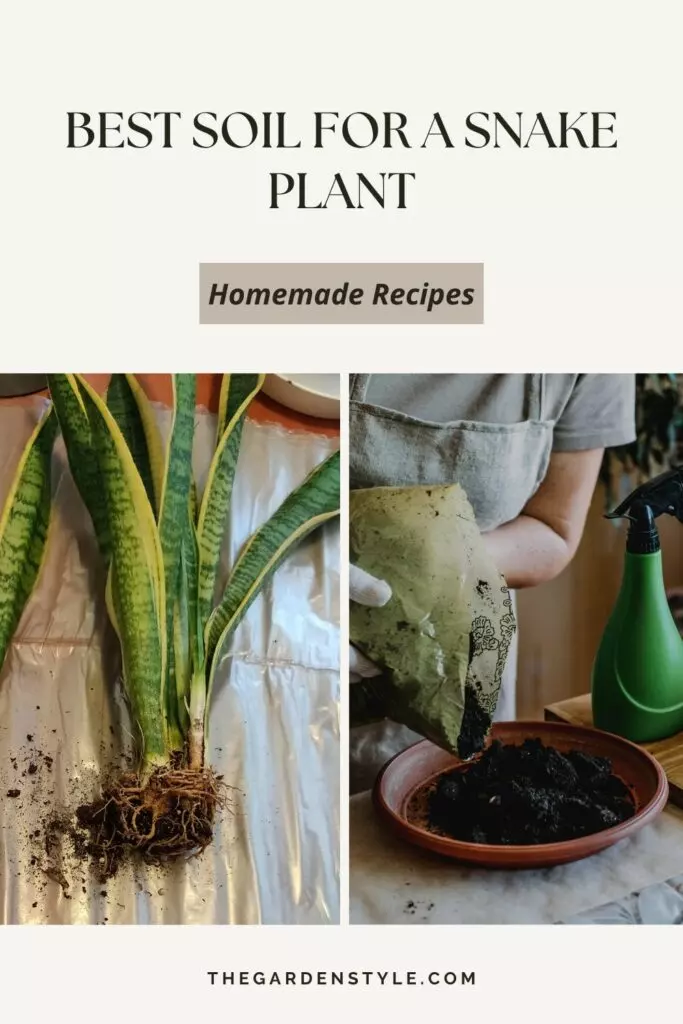Growing stunning snake plants starts with getting the soil right. When it comes to the best soil for a snake plant, proper drainage, and aeration are essential to prevent dreaded root rot in these tropical beauties. In this gardening blog post, I’ll cover the ideal soil components and mixes for healthy snake plants, along with two recipes for crafting homemade snake plant soil perfect for proper drainage and airflow. By using the custom blends I provide or choosing a suitable commercial cactus or orchid mix, you’ll give your dramatic snake plants the growing conditions they need to keep those spectacular spear-shaped leaves standing tall. Let’s talk about the best soil for a snake plant to yield thriving, eye-catching specimens that will flourish indoors for years to come!
Table of Contents
Best Soil for a Snake Plant
I have found that the right soil can make all the difference when it comes to the health and growth of a snake plant. After conducting extensive research and experimenting with various soil types, I have found that the best soil for a snake plant should have excellent drainage, aeration, and nutrient content.
Understanding the ideal pH levels for your plants is crucial for their healthy development. For snake plants, utilizing a soil blend featuring a pH range slightly leaning towards acidity or alkalinity, around 5.5 to 7.5, is recommended to support their growth. Learn more about how to measure soil pH.
Drainage
Snake plants require well-draining soil to prevent water from pooling around the roots, which can lead to root rot. I recommend using a soil mix that includes perlite, sand, or gravel to improve drainage. These materials help to create air pockets in the soil, allowing excess water to drain away from the roots. Using a well-drained substrate is vital to avoid yellow leaves on the snake plant.
Aeration
In addition to good drainage, snake plants also need soil that allows for adequate airflow around the roots. Aeration is essential for healthy root growth and can be achieved by using a light, porous soil mix. I suggest using a mix that includes peat moss, coconut coir, or vermiculite to improve aeration.
Nutrients
While snake plants are relatively low-maintenance, they still require nutrients to thrive. The best soil for a snake plant should have a balanced nutrient content, including nitrogen, phosphorus, and potassium. I recommend using a soil mix that includes organic matter, such as compost or worm castings, to provide a slow-release source of nutrients.
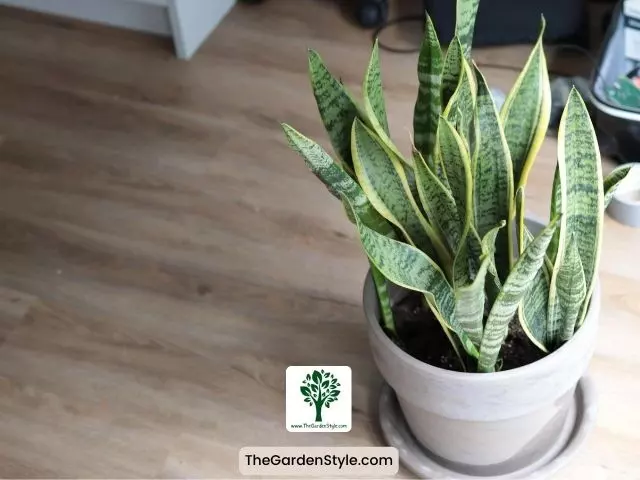
What Kind of Soil Do Snake Plants Like?
For optimal growth and health of your beloved snake plant, explore these top-notch potting mixes available on the market, ensuring the perfect blend for your green companion’s thriving habitat. Here are two of the best potting mixes that I recommend:
Cactus & Succulent Soil Mixes
Cactus and succulent soil mixes are an excellent choice for snake plants because they are well-draining and have a low moisture content. These mixes usually contain a blend of sand, perlite, and peat moss, which allows air to circulate around the plant roots and prevents overwatering. Additionally, the sand and perlite provide a good balance of nutrients for the plant.
Coarse Orchid Barks or Perlite Mixes
Coarse orchid barks or perlite mixes are another excellent option for snake plants. Orchid mixes are made up of large, chunky pieces of bark that allow for excellent drainage and airflow. Perlite is widely used in horticulture and gardening as a natural material, lightweight for soil amendment to improve aeration and drainage.
- 🌳 SUPPORT YOUR SNAKE PLANT’S GROWTH – Give your indoor flowering plants the nourishing environment it needs to thrive! This premixed, ready to use soil blend is made up of premium non-organic all-purpose soil.
- 🌳 FIT FOR ALL INDOOR PLANT VARIETIES – Whether you’re growing a Snake Plant, Mother-in-Law’s Tongue, Saint George’s Sword, Viper’s Bowstring Hemp or any Dracaena Trifasciatas plant, our soil won’t disappoint. It maximizes fertilizer absorption and provides excellent aeration to the roots.
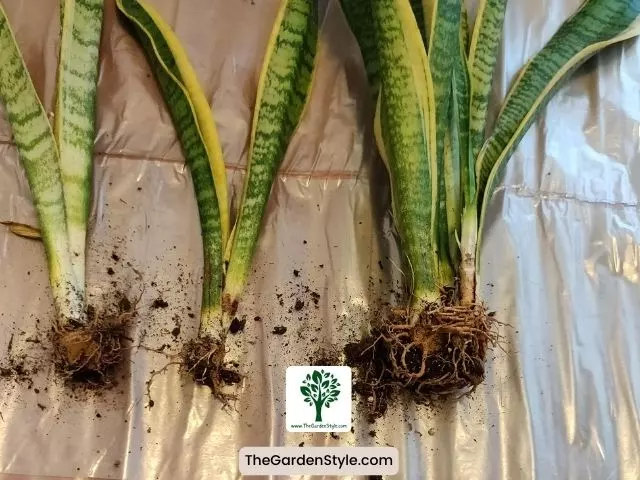
Making Your Own Snake Plant Soil
Snake plants are easy to care for and can thrive in a variety of soil types. However, making your own soil can be a great way to ensure that your snake plant has the perfect growing conditions. Here are two homemade recipes for making snake plant soil:
Soil Recipe 1
Ingredients:
Directions:
Mix the peat moss, perlite, and sand together in a large container.
Use the mixture to fill your snake plant’s pot, leaving about an inch of space at the top.
Water your snake plant thoroughly after planting.
Soil Recipe 2
Ingredients:
Directions:
Mix the potting soil, perlite, and coarse sand all together in a large container.
Use the mixture to fill your snake plant’s pot, leaving about an inch of space at the top.
Water your snake plant thoroughly after planting.
- Use to improve drainage and aeration in potting mixes
When making your own snake plant soil, it’s crucial to ensure that the soil is well-draining. Snake plants prefer drier soil. Therefore, overwatering can cause root rot. Adding perlite and sand to your soil mixture can help improve drainage.
It’s also essential to use a pot with drainage holes to prevent water from sitting in the bottom of the pot. Suppose your pot doesn’t have drainage holes (and drilling a few holes in the pot is not possible). In that case, I suggest adding a layer of gravel or rocks to the bottom of the pot to help improve drainage.
IMPORTANT: Avoid using sea sand for plants because it contains high salt levels that can harm their growth.
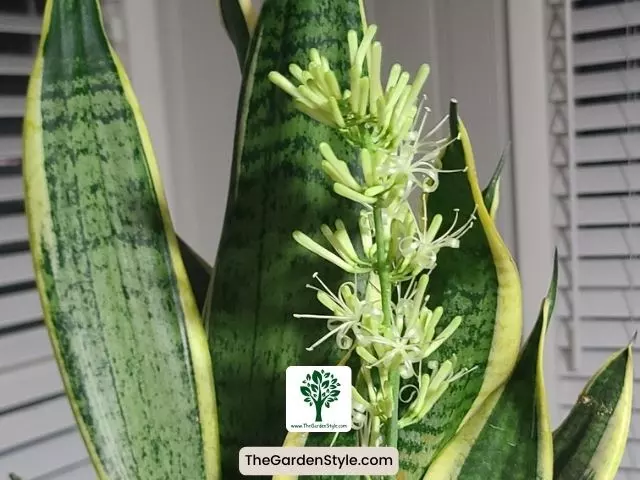
Tips for Repotting Snake Plants
Repotting snake plants is an important step in their growth and development. Here are some tips to keep in mind when repotting your snake plant:
- Choose the right soil: Snake plants prefer well-draining soil that is rich in nutrients. A good soil mix for snake plants is one part peat moss, one part sand, and one part perlite.
- Use a pot that is slightly larger than the current one: Snake plants like to be a little bit root-bound, so choose a pot that is only slightly larger than the current one. That will help prevent overwatering and keep the plant healthy.
- Water sparingly after repotting: After repotting, it’s essential to water your snake plant sparingly for the first few weeks. That will give the plant time to adjust to its new environment and prevent overwatering.
- Add fertilizer: Snake plants benefit from regular fertilization, especially after repotting. Use a balanced fertilizer and follow the instructions on the package.
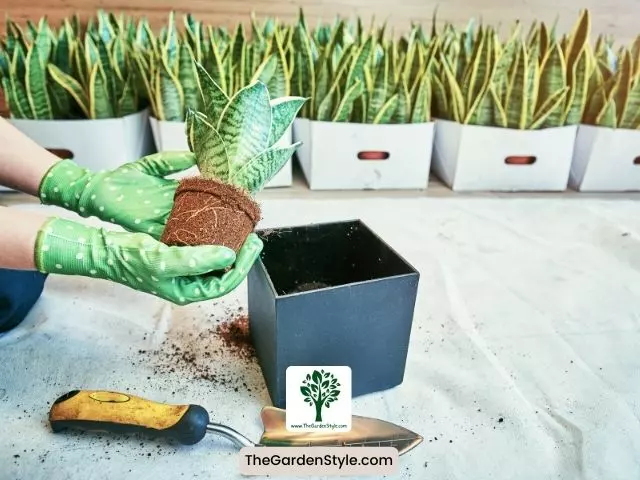
Frequently Asked Questions
Yes, succulent soil works very well for growing snake plants. Succulent soil mixes contain sand, perlite, gravel, or vermiculite to create a loose, fast-draining blend. This prevents standing moisture which can lead to root rot in snake plants.
Cactus soil also makes an excellent choice for potting snake plants. Like succulent soil, commercial cactus mixes provide the fast drainage snake plants require to keep their roots healthy.
Yes, orchid soil works well for snake plants because it provides the necessary drainage and air circulation on the roots needed to stay healthy. Orchid soil may drain too freely on its own, but mixed with standard potting soil, it offers an ideal blend of moisture retention and airflow for snake plant roots.
If this post about the best soil for a snake plant was helpful, please share it:
